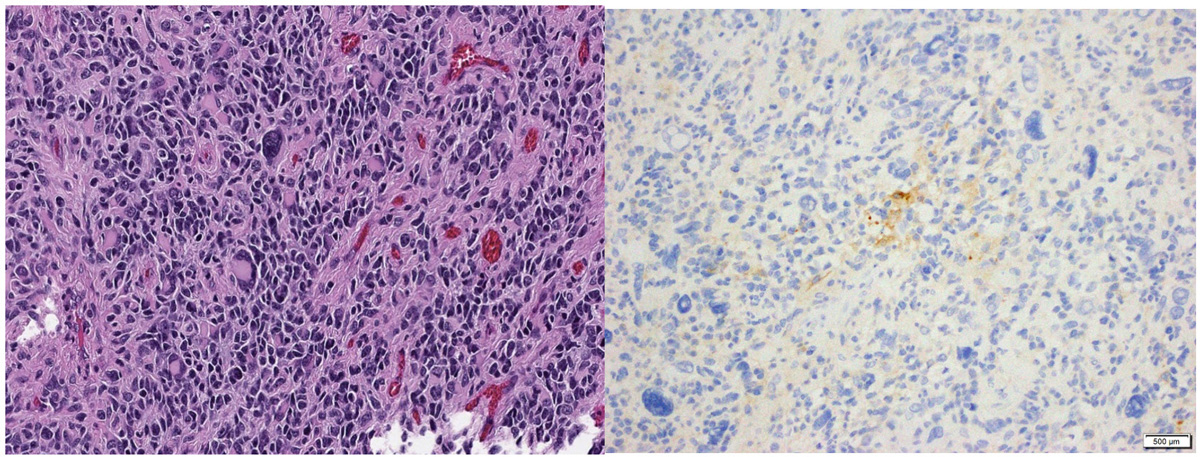Case 2
A 78-year-old male with worsening headache and temporal mass underwent a brain biopsy, which revealed glioblastoma multiforme.
NTRK gene fusion testing
The patient’s tumour demonstrated areas of focal cytoplasmic staining for TRK protein expression on pan-TRK IHC. An RNA-based assay (Archer panel) was subsequently performed and was negative for rearrangements and fusions respectively.
H&E (Left Hand Panel) and Pan-TRK IHC (Right Hand Panel) of Adult Patient with Glioblastoma Multiforme
TRK inhibitor treatment
This patient did not receive a TRK inhibitor.
Clinical interpretation and impact of TRK fusion testing
This case demonstrates a diagnostic pitfall of pan-TRK IHC [1]. Tissues with neurologic or smooth muscle differentiation often express the TRK protein physiologically, with or without the presence of an NTRK gene fusion. Therefore, pan-TRK IHC should not be performed when there is known neurologic or smooth muscle differentiation, and it should be interpreted with caution in sarcomas with unknown differentiation.
References
- Hechtman JF, Benayed R, Hyman DM et al. Pan-Trk Immunohistochemistry Is an Efficient and Reliable Screen for the Detection of NTRK Fusions. Am J Surg Pathol 2017; 41: 1547-1551.

